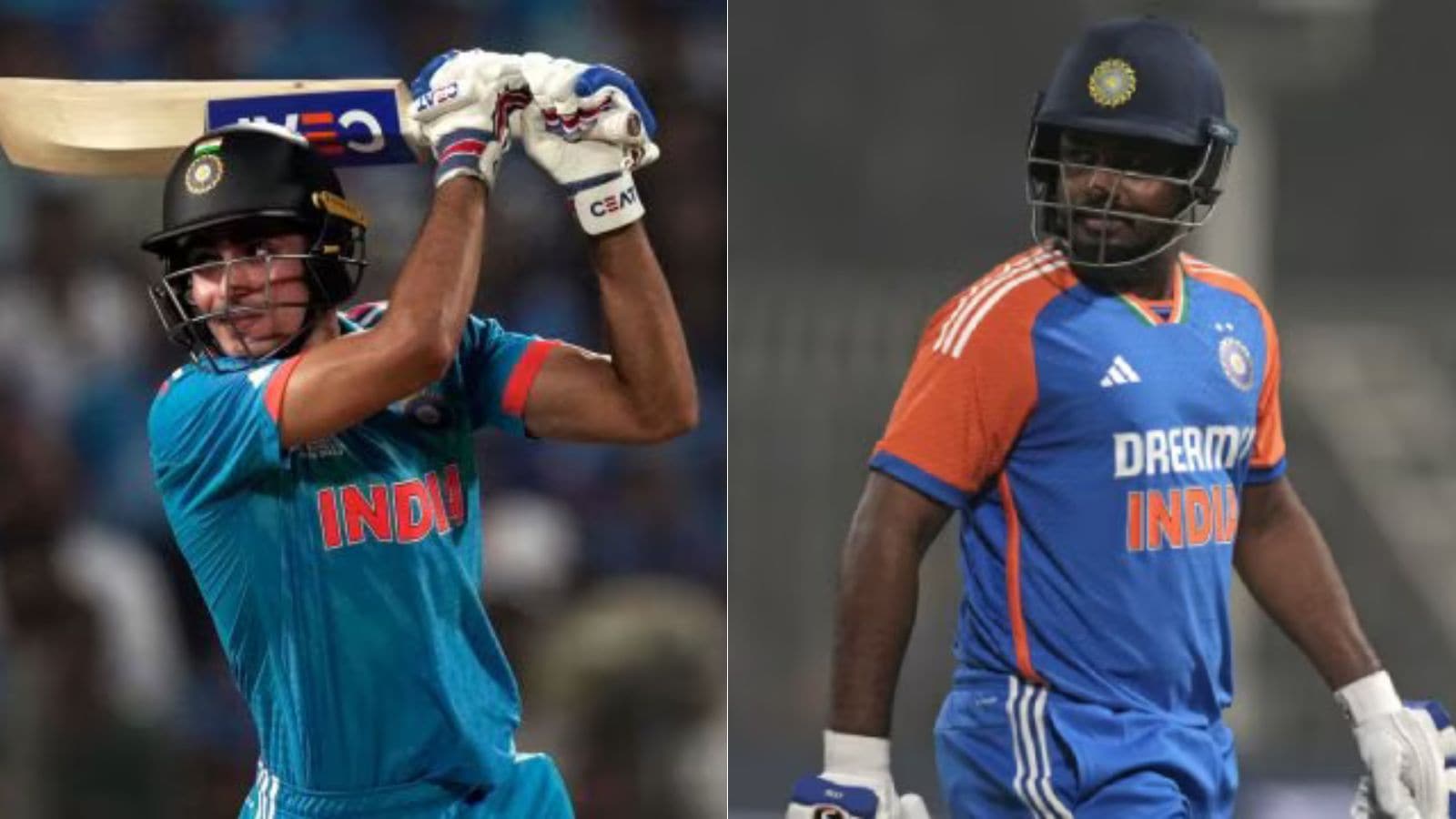ARTICLE AD BOX
After the 2023 IPL, where Shubman Gill amassed 890 runs, he had made a compelling case to be considered as an opener for the 2024 T20 World Cup. He wasn’t able to replicate a similar form in India colours and lost his spot for the tournament in the US and Caribbean. This time, 650 runs – which was not even the highest for a Gujarat Titans player, has proved enough to make India’s T20 cut not just as another batsman but with a vice-captain designation next to his name. So what has changed between 2024 and now? There were Rohit Sharma and Virat Kohli then, and having Gill would have been having three batsmen in a similar mould in T20s. Especially Virat and Gill.
The one aspect that India was missing in their T20 batting ranks, filled with aggressive stroke-makers, since the retirement of the big two, was a batsman who could bat in different gears. Gill’s inclusion now takes care of that aspect as well. Apart from offering leadership material, India’s team management also seems to have weighed in what Gill’s batting brings to this set-up with his approach, where he has shown in the last IPL that he is capable of being aggressive without taking way too many risks and ability to bat in different gears.
In the past, Gill has come across as a T20 batsman for whom, manoeuvring through different phases by altering gears isn’t easy. However, last IPL, with Gujarat heavily dependent on top three, Gill had shown he has come of age in T20s. It was not just a case of him beginning slow and gradually catching up by shifting gears. He showed he can start on top gear, slow down and play catch up and go full throttle, the entire distance. He did all of it by not embracing a high-risk approach, but merely by backing his own game, where instead of power-packed sixes, he was hurting teams by creaming boundaries after boundaries.
 Shubman Gill in action. (FILE photo)
Shubman Gill in action. (FILE photo)
That Gill’s accumulation mastery had unlocked new levels wasn’t only reflected by the volume of runs this year, but also the synchronous uptick in middle-overs striking and scoring across venues, all done while remaining rooted to his core principles. For the three years between 2022-24, Gill’s T20 game largely revolved around his incredible success at his IPL home ground in Ahmedabad. Of the 2637 runs he scored in the period, 1027 runs were piled on at the Titans’ base with a jaw-dropping 79.00 average and 166.99 strike rate in 17 innings. Outside the Narendra Modi Stadium, Gill’s shares were middling, restricted to 1610 in 55 innings, scoring about 31 runs per dismissal at a 135.97 SR.
Notably, the most recent IPL saw a dramatic shift in this regard, with Gill doubling his scoring (446) outside Ahmedabad (204) at a significantly higher average. Gill arguably clocked his best ever middle-overs (7-16) striking this year, glimpsing his evolving aptitude. Only two batters (Suryakumar Yadav and Jos Buttler) recorded more runs at a higher strike rate than Gill’s 323 at 163.13 in the phase, with 82 percent of those runs made outside Ahmedabad. Playing 198 balls, Gill’s 80.90 average also ranked the highest among the nine Indians who had scored at least 250 middle-overs runs in the 2025 season. Although Gill had aggregated higher in the middle overs (454) in 2023, he had yet to set the charts on fire away from home, a significant box ticked in his second year as GT skipper.
This versatility is a luxury that India believe they will need as they are putting together a squad keeping the next year’s T20 World Cup in mind. One of the reasons why India’s team management was averse to make any huge changes to the batting line-up was it felt more than any other format, in T20s batsmen needed to be given a long rope. Having adapted a high-risk approach, dropping a batsman in case of a failure in search of aggressive intent, could have an adverse impact as they could potentially slow down and look for runs to cement the spot. However, with the T20 World Cup being part of the big picture, there were also enough reasons to have a batsman of Gill’s calibre, one who could score without taking high-risks.
In the last IPL, where he finished fourth in highest run-scorers list, he showed he can inflict damage at the top in boundaries alone. In that list, his strike-rate of 155.87 was higher than that of only Virat Kohli (retired) and KL Rahul (not in T20 frame) is also a point worth taking into consideration as he still has plenty to improve in that aspect. But for now, India are in a position to accommodate him as they have enough strikes around him.
Story continues below this ad
 Virat Kohli in action. (File photo)
Virat Kohli in action. (File photo)
For the T20 World Cup at home, if India happen to play on pitches that are not on a flatter side, then they will surely need a batsman to play the situation rather than go in search of intent. In that regard, there is no better option than Gill.
Who makes the top three?
With Gill now certain to bat at the top, India will now have to slightly shuffle their batting. If they are not keen on disturbing Abhishek Sharma and Sanju Samson at the top, slotting Gill at No 3 could be a way forward with Tilak Varma, Suryakumar Yadav, Hardik Pandya, Axar Patel and Rinku Singh to follow. If India believe Gill needs to be slotted at the top, then it alters their batting dynamics a bit. With Samson being a top-order batsman and chairman of selectors Ajit Agarkar revealing that he stepped in because Gill wasn’t available, there is a strong chance that India now look at a wicketkeeper who can bat in the lower middle-order. It is with this complex situation in mind that the selectors preferred Jitesh Sharma over Dhruv Jurel, who had been India’s second wicketkeeper in the T20 squad.
While India have shown no signs of not compromising on batting depth — most teams with high-risk approaches embrace similar strategy – Gill’s inclusion could change that as well. Unless India see Hardik Pandya as their new ball bowler, they need room for at least two seamers and two other slots to include Varun Chakaravarthy and Kuldeep Yadav – two X-factor spinners. When that happens, it automatically compromises on batting depth – and Gill’s solidity becomes all the more vital. It could mean a slight change of approach, but India feel it is better to test it now rather than close to the T20 World Cup.
— With inputs from Lalith Kalidas



.png)
.png)
.png)

























 English (US) ·
English (US) ·